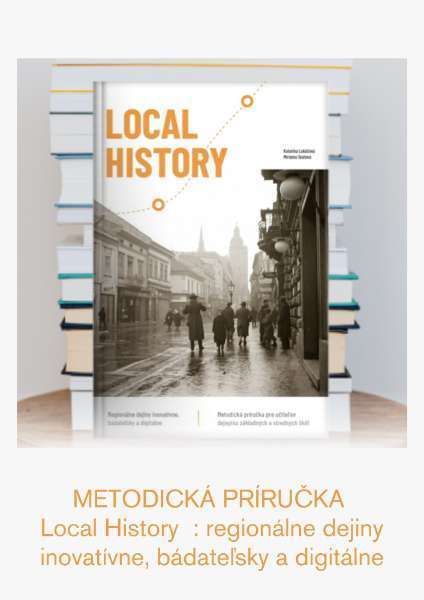Digital learning platform
Aims to offer interactive activities for history teaching that will guide students through the history of Košice during World War II. Various types of historical sources included in the materials will offer diverse angles of understanding the period from (1938) 1944 to 1945.

is hidden in the past

the stories behind
the buildings

About the project
The aim of the project, supported by the EVZ Foundation, is to create a digital learning platform that will enable primary and secondary school teachers to teach stories about the resistance to National Socialism in Košice during World War II.
Our researchers will create a tool for history teachers that links the local history of our region with world history, using material from archives and other public institutions, as well as from private collections.
In 2024, on the occasion of the 80th anniversary of the deportation of the Jews from Košice and the victims of the Hungarian Arrow Cross terror, we will offer the following to the public:a workshop, an exhibition and a professional multilingual publication.
The project objectives
to provide a comprehensive picture of the resistance to both, the Nazi and the Nazi-influenced regime
to shape the local memory of the anti-Nazi movement in Košice
to present the shared history of Slovaks, Hungarians, Jews, the Roma and other local inhabitants
We are also interested in the motives behind the actions of individuals and the very course of the resistance. Some of the actors opposed the regime for existential, ethnic or political reasons. Others simply wanted to protect their neighbours or friends against the genocide. The project therefore also reflects on the fate of some of the rescuers of Jews, the most vulnerable ethnic community in the city. Project activities aim to draw attention not only to the human fate of the victims, but also to the buildings and places in Košice associated with the events of the period. Learning about specific stories may lead to a better understanding of the complexity of the contemporary reality.
By discussing and learning about wartime persecution and aid, the public can understand how fake news originated, how hate speech worked, and how solidarity between people was born in the past. This allows us to draw parallels between the past and the present.
News
Project methodology
Our project methodology is based on the example of the best practice in the Czech Republic, where the Historylab.cz project operates. Using the archival sources collected by our researchers from archives and libraries and including them in specific educational activities, our intention is to create a digital interactive tool for history teachers that will link the history of our region and the “Big Six Historical Thinking Concepts”.
Following the pattern of activities tried and tested in the Czech Republic, the key areas of the project, in line with its central focus, are:
Cause and Consequences, through which students gain an understanding that any action an individual took in the past may have a variety of consequences and that the environment also plays a role in that action.
Show more
The next area, Continuity and Change, helps students find logic in complex historical processes and highlights the overlap of different historical phenomena — from local events to those of transnational significance.
Show more
The third key area focuses on Historical Perspectives. It intends to clarify to students that the contemporary perspectives of historical actors can only be understood after a thorough examination of their historical context. It will also enable students to better understand why there is not just one unchanging interpretation of history.
Show more
The last concept, Relationship to the Past, answers the elementary question - what is the purpose of history? It helps students address how they can better comprehend the present through the past and at the same time better visualize their future. Activities and tasks designed in this way ensure that students acquire the skills necessary for a basic orientation in historical culture.
Show more
Each teaching activity presents one story using specific archival and contemporary sources. Interconnecting local stories and the opportunity to interpret the sources will enable teachers to form students' historical thinking and consciousness. Understanding the regional context, students will also be able to answer questions about the development of historical thinking concepts. At the same time, students will be exposed to training in soft skills, such as critical thinking, decision-making, persuasion and argumentation.
Members of the team

PATRÍCIA FOGELOVÁ
Institute of Social Sciences, CSPS SAS.

VERONIKA SZEGHY—GAYER
Institute of Social Sciences, CSPS SAS.

Katarína Lukáčová
Lifelong Learning Centre, Pavol Jozef Šafárik University, Košice.

Miriama Svatová
Lifelong Learning Centre, Pavol Jozef Šafárik University, Košice.
The digital learning platform is financed within the EVZ project Local History NO. 32.5.7T00.0021.0.


















